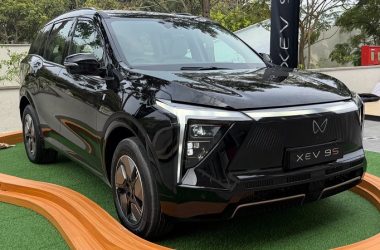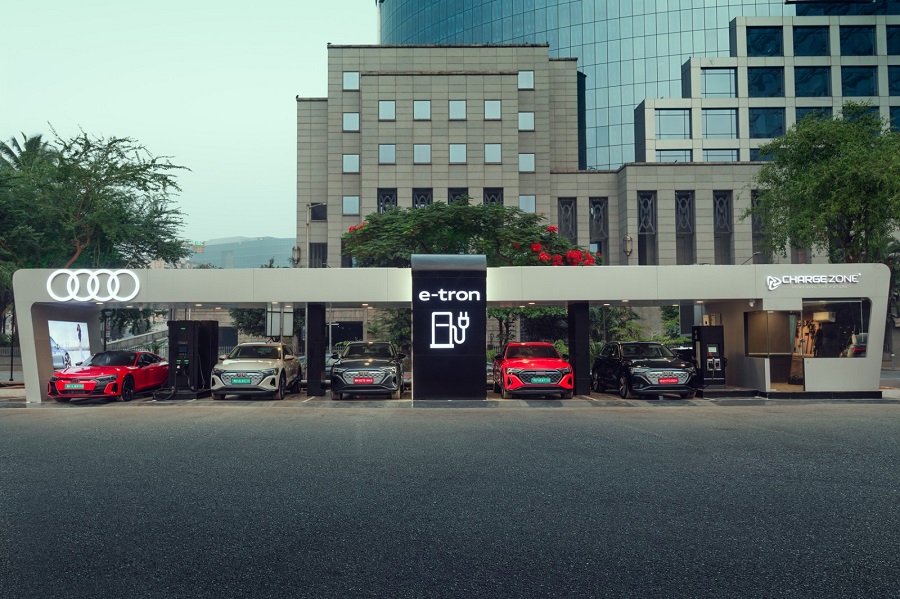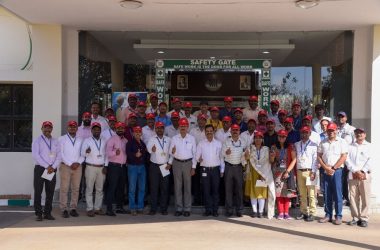“Gears of Glory or Gears of Gloom?”
NEW DELHI – India’s automobile industry, the proud bearer of ₹22 lakh crore ambitions, now finds itself at the crossroads — and this time, there’s no GPS signal. After clocking an impressive 9% sales growth in 2024 with 26.1 million units sold, the industry zooms into 2025 with the swagger of a Grand Prix champion… and the stomach ache of a student entering a surprise math test.
So, what’s the diagnosis? In true Indian fashion — it’s complicated.
🔌 EVs: Electrifying, But Still Not Shock-Proof
India’s electric vehicle (EV) market had its moment of Bollywood drama. Sales surged to 1.408 million units, market penetration rose to 5.59%, and Tata Motors strutted to the top like the Shah Rukh Khan of EVs with over 61,000 units. Even luxury brands like Mercedes-Benz caught the spark, doubling their EV sales with four new launches (though someone should tell them “modest” doesn’t usually mean “94% growth”).
Yet, for all the electric fireworks, a reality check flickers: India’s EV-to-charger ratio is 1:400. That’s like building 400 temples but forgetting to install the bell. We need 1.32 million charging stations by 2030, but as of November 2024, we’ve installed just over 25,000. At this rate, charging your car may soon take longer than watching all 22 Marvel films back-to-back.
🚜 Two-Wheelers: Scooting Ahead, But Some Are Wheezing
Rural recovery, good monsoons, and crop MSPs have fueled a two-wheeler resurgence. FY25 could see 24.1 million units sold, nearly a record. Scooters are becoming the preferred chariots of urban India — especially among women — with their mix of storage, style, and street-savvy swagger.
But the entry-level motorcycle segment is coughing up smoke — not just from emissions, but from looming cost hikes due to stricter norms. And even with surging demand, capacity utilization is stuck at a sluggish 55–60%. It’s like preparing 100 biryanis a day and only selling 60 — wasteful and demoralizing.
🚚 Commercial Vehicles: Grit, Guts, and… a Gear Stuck in Neutral?
CV production crossed 1 million units, and projections show steady growth. But exports are wobbling like a badly parked truck — having peaked in 2021-22, they’ve dipped and are only slowly regaining traction.
🚗 Passenger Vehicles: Room for Growth, But Watch for Potholes
Passenger vehicle production and sales broke records in 2022-23 and are heading for 5.6 million units by 2026-27. Maruti Suzuki still wears the crown (40.26% share), but Mahindra is plotting a palace coup, powered by XUV700s, Thars, and Scorpio-Ns with a combined charisma that even Bollywood would envy.
Toyota, Kia, and Hyundai are charging forward, while MG and BYD whisper “EV” like it’s a magic word — though the volume is still niche. Meanwhile, traditional sedans sulk in showroom corners, gathering dust and existential angst.
👑 Luxury Cars: Record Sales, Gold-Plated Problems
The luxury segment hit a record with over 51,000 units sold. Mercedes-Benz had its best year ever in India, JLR delivered a mic-drop performance with 6,183 units, and BMW and Audi also flexed. Yet, like a five-star meal served on a turbulent flight, the comfort is tempered by financial market uncertainties and — of all things — Donald Trump.
Yes, that Trump.
🧨 Trump’s Tariff Tantrum: Apocalypse on Four Wheels?
In a move that made international economists spit out their green tea, President Trump slapped a 25% tariff on auto imports, citing “national security.” This could add $6,000 to car prices in the U.S., a country that imports nearly half its cars. For India, while direct PV exports to the US are negligible, auto parts and tyres are feeling the burn — with over $7 billion at risk.
Said one Indian auto executive off the record: “We built a global supply chain. He built a wall.”
⚡ EV Infrastructure: The Missing Puzzle Piece
Charging stations remain scarce, grid issues abound, and residential societies resist EVs like they’re HOA kryptonite. Despite government efforts — 2,877 more stations approved — India needs a faster-than-F1 rollout strategy.
Mahindra’s offering lifetime battery warranties (take that, toothbrushes), and Kia’s working on 18-minute charging (finally, a reason to love waiting at a petrol station). But until superfast charging, seamless regulations, and smoother installations become the norm, India’s EV dream risks stalling on the expressway.
🧪 Policy Push: Incentives, Acronyms, and Alphabet Soup
The government’s schemes sound like they were cooked up by a very caffeinated Scrabble champion — FAME, PLI, ACC, EMPS, PM E-DRIVE — and they’re all throwing crores at the EV transition.
Highlights include:
- ₹25,938 crore under PLI for auto and auto components
- ₹18,100 crore for ACC battery production
- Subsidies on e-2Ws, e-3Ws, and EV buses
- 5% GST on EVs and chargers (finally, something cheaper!)
🌏 Global Jitters, Domestic Woes
If China’s producing EVs 30% cheaper, the EU’s taxing imports, Japan’s ruling hybrids, and Thailand’s EV exports rival India’s — where does that leave us? Somewhere between jugaad and genius.
Oh, and let’s not forget: we still import 90% of our semiconductors and 75% of our lithium batteries come from China. Which means if someone sneezes in Shanghai, an Indian factory catches the flu.
📉 Inventory Glut: Cars, Cars Everywhere — and No One to Drive Them
India has nearly 8 lakh unsold vehicles worth ₹79,000 crore — partly due to rising input costs, GST burdens, and shifting consumer tastes. It’s the automotive equivalent of baking 10,000 cakes and watching keto take over Instagram.
🚧 The Imperial College Bombshell: The EV Boom May Burn the Grid
A sobering report by London’s Imperial College warns that if EV penetration hits 25% by 2030, India’s electricity demand could rise 60%. That’s more juice than Diwali and IPL combined.
We’ll need 6.7 million new charging points, massive upgrades to the power grid, and synchronized investments in renewable energy — or risk turning a green revolution into a blackout.
🧭 So, Where Do We Go from Here?
The answer: everywhere, all at once.
- GST reform to make hybrids and two-wheelers cheaper
- R&D and skilling to leapfrog global competitors
- Battery independence through local supply chains
- Charging infra scaled at rocket speed
- Policy consistency that doesn’t change every quarter
With the right strategies — and a dash of desi ingenuity — India can still become a global automotive superpower. But for now, the ride ahead is less cruise control and more roller coaster.
So buckle up. The year’s just begun, and the check engine light is already on.
About the Author
Dr. Manoranjan Sharma is Chief Economist, a columnist, and a car aficionado who believes that macroeconomics is best understood with metaphors, mileage stats, and a little bit of madness.






